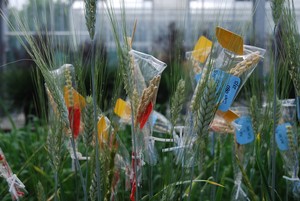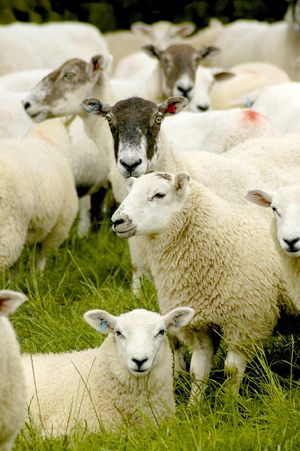Unifying the approaches to plant and animal breeding through the use of genomic selection is crucial to achieving global food security, according to a team of world leading scientists.
In a paper published this week in the international journal Nature Genetics, scientists from NIAB, the University of Edinburgh’s Roslin Institute and Scotland’s Rural College (SRUC) assert that global collaboration and investment across the two disciplines is central to increasing agricultural productivity and resilience.
Exploiting scientific critical mass and the high volume of available genomic data about plant and animal species that is now available would help to address questions that are common to both disciplines. This would lead to ‘game changing’ advances in breeding while simultaneously creating a platform for new scientific discoveries and ‘products’ – such as plants that can grow with less water or lower levels of nutrients - that may be of particular benefit to the developing world.
Professor Wayne Powell, Principal and Chief Executive of SRUC, co-authored the paper with Professor Ian Mackay, Head of Quantitative Genetics at NIAB, Tinashe Chiurugwi, former NIAB Research Scientist and Professor John Hickey, Chair of Animal Breeding at The Roslin Institute.
Prof. Powell said: “Genomic selection has made it possible for the first time since the dawn of agriculture to carry out genetic selection without relying on the assessment of visible characteristics, known as phenotyping.
“Genomics provides a common technology base, allowing the bringing together of plant and animal breeding that would create a step change in the rate of genetic gain for crops, livestock and aquaculture while also providing a very strong platform for new discoveries. Not only will we be able to produce new varieties and breeds, we will also have a better understanding of the biological processes that underpin their performance.
“We already have examples of where genomic selection is making major changes in the private sector, such as its use in the dairy industry where the interval between generations of cattle has been shortened from five to two years. However, there is a huge opportunity for it to be used to deliver public good by bringing benefits to the developing world.”
The unification of animal and plant breeding will require a co-ordinated global effort by scientists and research funders, the advancement of scientific skills and the development of new partnerships spanning the public and private sectors, say the authors.
Prof. Hickey said: “While plant and animal breeding have the same roots and the same goals, they have diverged somewhat over the decades due to biologically induced requirements for different technical approaches. Genomic selection is the technology through which they can again coalesce. This will require new ways of structuring breeding programmes and the research programmes that support them.”
The Nature Genetics paper was the result of the ‘Implementing Genomic Selection in CGIAR Breeding Programs’ workshop which brought public and private plant and animal breeders together with genomics technology vendors. The workshop was funded by the food security research consortium CGIAR and the UK Biotechnology and Biological Sciences Research Council (BBSRC).


